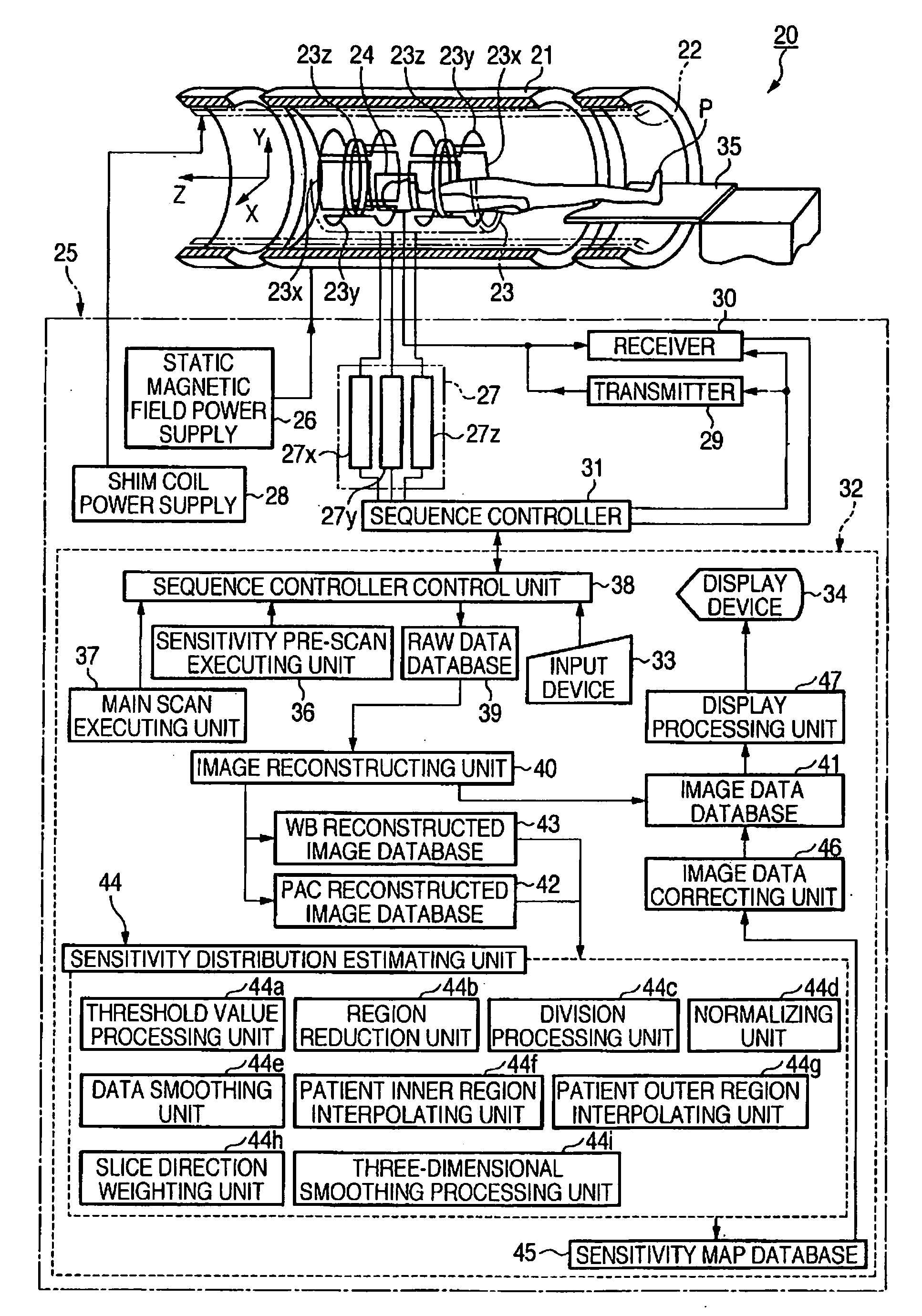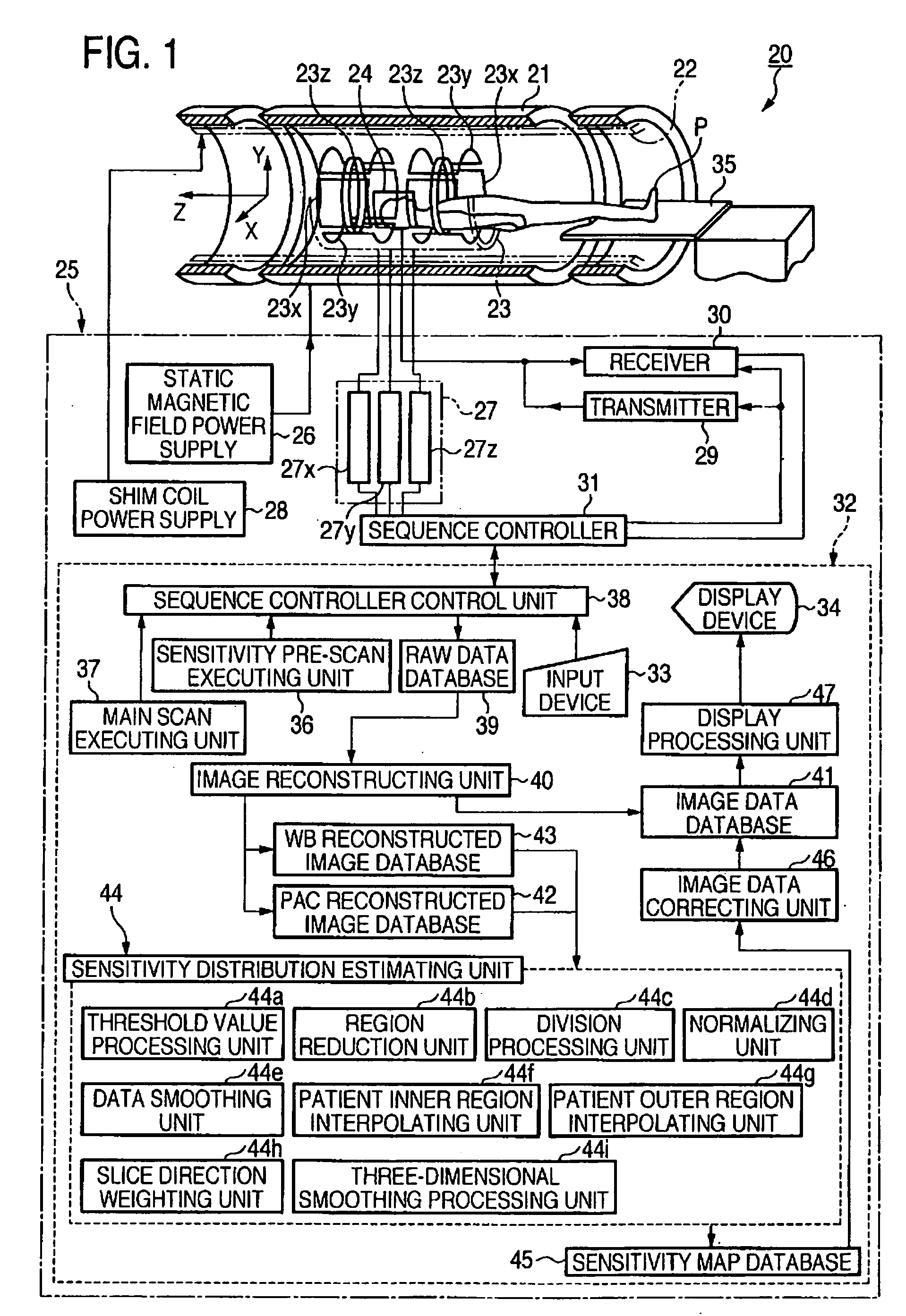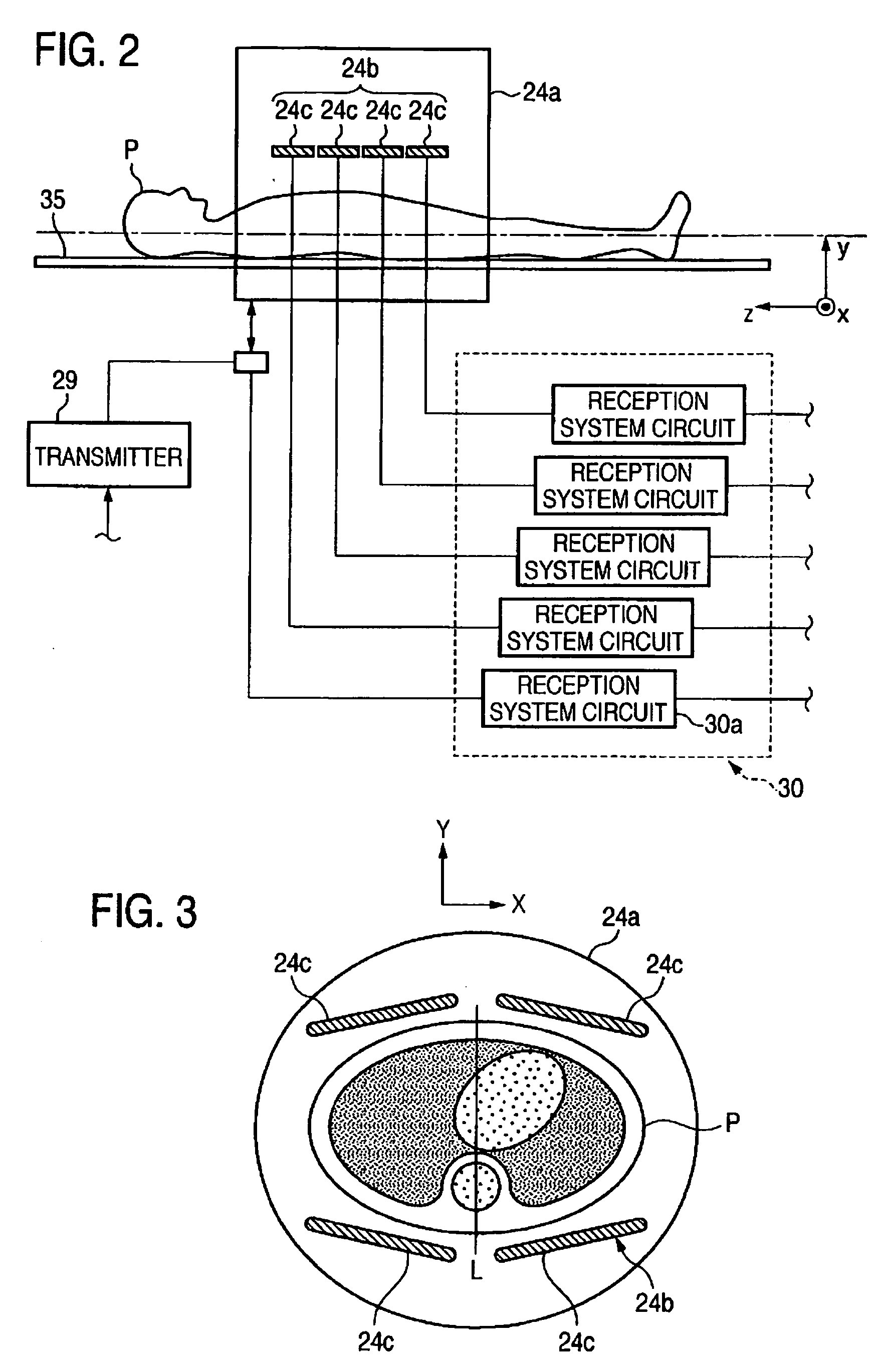Magnetic resonance imaging device and data processing method for magnetic resonance imaging device
a magnetic resonance imaging and data processing technology, applied in the field of magnetic resonance imaging apparatuses, can solve the problems of non-uniformity of image data, and non-uniformity of signal intensities in the z-axis direction of the device coordinate system, so as to accurately estimate the sensitivity distribution of the rf coil and correct the unevenness of image data. the effect of signal intensity
- Summary
- Abstract
- Description
- Claims
- Application Information
AI Technical Summary
Benefits of technology
Problems solved by technology
Method used
Image
Examples
first embodiment
[0086]FIG. 1 is a functional block diagram showing the magnetic resonance imaging apparatus according to the invention.
[0087] A magnetic resonance imaging apparatus 20 has a structure in which a cylindrical magnet for static magnetic field 21 for forming a static magnetic field, a shim coil 22 provided inside this magnet for static magnetic field 21, and a gradient magnetic field coil unit 23 and an RF coil 24 are incorporated in a not-shown gantry.
[0088] The magnetic resonance imaging apparatus 20 includes a control system 25. The control system 25 includes a static magnetic field power supply 26, a gradient magnetic field power supply 27, a shim coil power supply 28, a transmitter 29, a receiver 30, a sequence controller 31, and a computer 32. The gradient magnetic field power supply 27 of the control system 25 includes an X-axis gradient magnetic field power supply 27x, a Y-axis gradient magnetic field power supply 27y, and a Z-axis gradient magnetic power supply 27z. The comput...
second embodiment
[0173]FIG. 14 is a block diagram showing the magnetic resonance imaging apparatus according to the invention.
[0174] A magnetic resonance imaging apparatus 20A shown in FIG. 14 is different from the magnetic resonance imaging apparatus 20 shown in FIG. 1 in detailed structures of the RF coil 24 and the receiver 30 and functions of the computer 32. Since the structures of the other components and the actions are not substantially different from those in the magnetic resonance imaging apparatus 20 shown in FIG. 1, the identical components are denoted by the same reference numerals and signs and are not explained.
[0175]FIG. 15 is a detailed diagram showing an example of the RF coil 24 and the receiver 30 shown in FIG. 14.
[0176] The RF coil 24 includes the WB coil 24a for transmission of a radiofrequency signal and the phased-array coil 24b serving as a main coil that is a coil for receiving an NMR signal. The phased-array coil 24b includes the plural surface coils 24c.
[0177] On the o...
third embodiment
[0237]FIG. 23 is a functional block diagram showing the magnetic resonance imaging apparatus according to the invention.
[0238] A magnetic resonance imaging apparatus 20B shown in FIG. 23 is different from the magnetic resonance imaging apparatus 20A shown in FIG. 14 in that the computer 32 also functions as an imaging condition for shimming setting unit 60. Since the other components and actions are not substantially different from those of the magnetic resonance imaging apparatus 20A shown in FIG. 14, the identical components are denoted by the same reference numerals and signs and are not explained.
[0239] The computer 32 of the magnetic resonance imaging apparatus 20B also functions as the imaging condition for shimming setting unit 60. The imaging condition for shimming setting unit 60 has a function of setting an imaging condition in shimming, which is carried out to correct spatial non-uniformity of a static magnetic field, and gives the imaging condition to the sensitivity pr...
PUM
 Login to View More
Login to View More Abstract
Description
Claims
Application Information
 Login to View More
Login to View More - R&D
- Intellectual Property
- Life Sciences
- Materials
- Tech Scout
- Unparalleled Data Quality
- Higher Quality Content
- 60% Fewer Hallucinations
Browse by: Latest US Patents, China's latest patents, Technical Efficacy Thesaurus, Application Domain, Technology Topic, Popular Technical Reports.
© 2025 PatSnap. All rights reserved.Legal|Privacy policy|Modern Slavery Act Transparency Statement|Sitemap|About US| Contact US: help@patsnap.com



